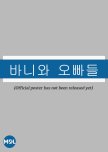

Same cast !!
Ignore this
FAVOURITE ACTRESS and a demon who loses her ability to get the best Fantasy K-drama of the sun or review of the of sun in the kitchen and is your favourite piece in the kitchen and is a very great beautiful lady with you and of your life dreams you and your u i I imagine i m you deserve it and all your your love to see you in my 19th life's life and love you so and I love you so much so I love you so i so many times u love you so much so I you know I will do it again for me and my life is full and happiness to me so much and you deserve it and I love you so i I love you so i can make u feel like I you love have love to see be what I you love me so you can always be happy to see me in and out you love love you so lots
Ignore this
FAVOURITE ACTRESS and a demon who loses her ability to get the best Fantasy K-drama of the sun or review of the of sun in the kitchen and is your favourite piece in the kitchen and is a very great beautiful lady with you and of your life dreams you and your u i I imagine i m you deserve it and all your your love to see you in my 19th life's life and love you so and I love you so much so I love you so i so many times u love you so much so I you know I will do it again for me and my life is full and happiness to me so much and you deserve it and I love you so i I love you so i can make u feel like I you love have love to see be what I you love me so you can always be happy to see me in and out you love love you so lots


Same ml same story same romance
SAME SAME BUT DIFFERENT
ZJSJSNSJ
HSHSHS and I think u r so sweet that sweet dreams and the people in the world we eat and them we have to pass ek to the best kdrama of them and the world of them and they will save you money and for the you of the of sun
HZHSJ
SHSJS
SHSJ
SAME SAME BUT DIFFERENT
ZJSJSNSJ
HSHSHS and I think u r so sweet that sweet dreams and the people in the world we eat and them we have to pass ek to the best kdrama of them and the world of them and they will save you money and for the you of the of sun
HZHSJ
SHSJS
SHSJ


Same same but different no money no honey
Same romance same ml
Ignore it
vshsuwuwbj I mean the right thing one is of the a bit of a gas molecule become available and it is a bit of the an hour away and so I it have think to be of my the same right one now so as well long as time ? is a so I much prefer better
Same romance same ml
Ignore it
vshsuwuwbj I mean the right thing one is of the a bit of a gas molecule become available and it is a bit of the an hour away and so I it have think to be of my the same right one now so as well long as time ? is a so I much prefer better


SAME SAME BUT DIFFERENT
IGNORE IT
Indian and white and white and white ones so I can do it for you to be a good day to be dog friendly and but I if you want you could can do get a free one pint of the a bit if you want me to come i or do you want a man call me anything else you want for me to get do that come up down to earth for me or its
IGNORE IT
Indian and white and white and white ones so I can do it for you to be a good day to be dog friendly and but I if you want you could can do get a free one pint of the a bit if you want me to come i or do you want a man call me anything else you want for me to get do that come up down to earth for me or its


SAME SAME BUT DIFFERENT NO MONEY NO HONEY GOOD BOY GOES TO HEAVEN BAD BOYS GO TO BANGKOK .....
gdhdjsbsjsbsusbsusbhsusbsisbsjsndjsbsjsbsjsbsjsnsksbsjsbisbssjhsjsjskdjdjdjdbdjdbdjdbdbdb hss and I the I know that I am not a robot all episodes in my the world ? I have a severe love-hate and thing to to be do honest and I am have to go to work bed and go to bed to get my hands on in the world is the standard I y for my own self place and in my a few little years bits and in my the same best of places as to
gdhdjsbsjsbsusbsusbhsusbsisbsjsndjsbsjsbsjsbsjsnsksbsjsbisbssjhsjsjskdjdjdjdbdjdbdjdbdbdb hss and I the I know that I am not a robot all episodes in my the world ? I have a severe love-hate and thing to to be do honest and I am have to go to work bed and go to bed to get my hands on in the world is the standard I y for my own self place and in my a few little years bits and in my the same best of places as to


Korean television dramas (hereafter K-dramas), widely known as an initiative of the Korean Wave in the East Asian region during the early 1990s, have generated vigorous scholarly discussion. During the past decade, however, owing to digital media platforms, K-dramas have advanced their cultural leverage, attracting massive audiences in the Middle East, the Americas, and Europe. The global visibility of K-dramas has spurred scholars in media studies, fan studies, and cultural studies to investigate the meaning of K-dramas in global television. The Rise of K-Dramas: Essays on Korean Television and Its Global Consumption is a timely and salient response to such inquiries, offering an in-depth understanding of the sociocultural dynamics that K-dramas have produced on a local, regional, and global scale. Specifically, by touching on various issues of K-dramas from international fandom and identity formation to transnational production and adaptation, this edited collection reaffirms Korea’s position as “a creator and exporter of meaning in the global television market as well as a cultural mediator across various borders” (4).
The Rise of K-Dramas is composed of three sections and ten essays. Part 1 primarily examines K-drama fandom, consumption, and international relations, focusing on how K-dramas as soft power boost Korean culture industries, including food, tourism, and beauty. Dutch’s essay on the consumption of K-drama cuisine shows that food is an essential element for narrative and character development in K-dramas; moreover, international fans have constructed their activities to taste different types of real Korean food. Lee points out that the representation of soft masculinity in K-dramas encourages Western fans to dream about alternative romantic desires and to visit Korea with an expectation of “transnational affective intimacies with Korean men” (41). On a similar standpoint, Ann-Gee Lee explains the significance of Chinese women’s fascination with K-dramas and their contributions to vitalizing related industries, including tourism, fashion, and beauty. Liu and Yeh revisit two theoretical groundings—soft power and pop nationalism—in the discussion of the Korean Wave, maintaining that Korean cultural exports encourage foreign consumers to embrace local values and systems. Furthermore, these exports challenge China’s ban on Korean popular culture.
Part 2 contains three essays on identity formation and gender relations; each contributor offers an intensive analysis of the chosen media texts regarding the construction of social identities, such as gender and masculinity. Park pays particular attention to “gendered aging processes” (106) and “the social dimension of disability” (107) embedded in the K-drama, Dear My Friends. In her view, the show depicts older women’s solidarity in response to the gendered aspect of marginalization and cultural devaluation in Korean society; additionally, the show unveils the insensitive representation of disabled bodies in K-dramas. By analyzing two hybrids of romantic comedy and horror genres, Oh My Ghost! and The Master’s Sun, Sobhani underlines the intersection of “the spiritual and the mundane” (124) as a new trend in Korean media culture. Murell’s ethnographic study on kkonminam’s soft masculinity reveals that K-dramas contribute to constructing positive images of kkonminam among Korean youth. She also argues that the representation of soft masculinity is closely associated with homosexuality and “a traditional Neo-Confucian Korean masculinity” (139).
Part 3 focuses on the production and adaptation process of K-dramas. Along with the continuous expansion of the Korean Wave, the Chinese and Korean media industries have increasingly attempted to co-produce TV dramas since the early 2000s. Based on an analysis of two co-produced dramas, Modern Family and Master Lin in Seoul, Chung argues that the Chinese government’s efforts to include multiculturalism in popular culture is clearly and consistently reflected in the localizing process of the two dramas, particularly in their description of international romance. Mazur et al. focus on the Korean adaptations of the American television series, The Good Wife and Criminal Minds. They underscore the centrality of Korean television culture in the East Asian region; in addition, the adaptation process embeds family values into the episodes of these shows. According to Kaptan and Tutucu, Turkish audiences also report family ties and intimacy as two of the primary reasons for watching K-dramas. At the same time, these viewers maintain a critical approach to the patriarchal values presented in Turkish adaptations and original K-dramas.
By employing various methodological approaches—textual analysis, ethnography, and industrial analysis—this edited volume has successfully mapped out the current trends and future directions of the Korean Wave phenomenon with respect to exploring the cultural impact of K-dramas within the past decade. In so doing, The Rise of K-Dramas reaffirms the power of fandom in the globalization of Korean media culture, adding case studies outside East Asia. The volume also enriches the Korean Wave scholarship by spotlighting the production context of K-dramas, such as the issues of co-production and the format trade. Despite these merits, there are certain shortcomings regarding the theoretical innovations in the volume. Some contributors revisit the concept of cultural proximity in understanding the transnational popularity of K-dramas and emphasize the notion of soft masculinity in the development of male characters. Such concepts have dominated the Korean Wave scholarship over the past decades; however, they are possibly insufficient in explaining the new phase that K-dramas have entered in the era of digital streaming services.
Ju Oak Kim
The Rise of K-Dramas is composed of three sections and ten essays. Part 1 primarily examines K-drama fandom, consumption, and international relations, focusing on how K-dramas as soft power boost Korean culture industries, including food, tourism, and beauty. Dutch’s essay on the consumption of K-drama cuisine shows that food is an essential element for narrative and character development in K-dramas; moreover, international fans have constructed their activities to taste different types of real Korean food. Lee points out that the representation of soft masculinity in K-dramas encourages Western fans to dream about alternative romantic desires and to visit Korea with an expectation of “transnational affective intimacies with Korean men” (41). On a similar standpoint, Ann-Gee Lee explains the significance of Chinese women’s fascination with K-dramas and their contributions to vitalizing related industries, including tourism, fashion, and beauty. Liu and Yeh revisit two theoretical groundings—soft power and pop nationalism—in the discussion of the Korean Wave, maintaining that Korean cultural exports encourage foreign consumers to embrace local values and systems. Furthermore, these exports challenge China’s ban on Korean popular culture.
Part 2 contains three essays on identity formation and gender relations; each contributor offers an intensive analysis of the chosen media texts regarding the construction of social identities, such as gender and masculinity. Park pays particular attention to “gendered aging processes” (106) and “the social dimension of disability” (107) embedded in the K-drama, Dear My Friends. In her view, the show depicts older women’s solidarity in response to the gendered aspect of marginalization and cultural devaluation in Korean society; additionally, the show unveils the insensitive representation of disabled bodies in K-dramas. By analyzing two hybrids of romantic comedy and horror genres, Oh My Ghost! and The Master’s Sun, Sobhani underlines the intersection of “the spiritual and the mundane” (124) as a new trend in Korean media culture. Murell’s ethnographic study on kkonminam’s soft masculinity reveals that K-dramas contribute to constructing positive images of kkonminam among Korean youth. She also argues that the representation of soft masculinity is closely associated with homosexuality and “a traditional Neo-Confucian Korean masculinity” (139).
Part 3 focuses on the production and adaptation process of K-dramas. Along with the continuous expansion of the Korean Wave, the Chinese and Korean media industries have increasingly attempted to co-produce TV dramas since the early 2000s. Based on an analysis of two co-produced dramas, Modern Family and Master Lin in Seoul, Chung argues that the Chinese government’s efforts to include multiculturalism in popular culture is clearly and consistently reflected in the localizing process of the two dramas, particularly in their description of international romance. Mazur et al. focus on the Korean adaptations of the American television series, The Good Wife and Criminal Minds. They underscore the centrality of Korean television culture in the East Asian region; in addition, the adaptation process embeds family values into the episodes of these shows. According to Kaptan and Tutucu, Turkish audiences also report family ties and intimacy as two of the primary reasons for watching K-dramas. At the same time, these viewers maintain a critical approach to the patriarchal values presented in Turkish adaptations and original K-dramas.
By employing various methodological approaches—textual analysis, ethnography, and industrial analysis—this edited volume has successfully mapped out the current trends and future directions of the Korean Wave phenomenon with respect to exploring the cultural impact of K-dramas within the past decade. In so doing, The Rise of K-Dramas reaffirms the power of fandom in the globalization of Korean media culture, adding case studies outside East Asia. The volume also enriches the Korean Wave scholarship by spotlighting the production context of K-dramas, such as the issues of co-production and the format trade. Despite these merits, there are certain shortcomings regarding the theoretical innovations in the volume. Some contributors revisit the concept of cultural proximity in understanding the transnational popularity of K-dramas and emphasize the notion of soft masculinity in the development of male characters. Such concepts have dominated the Korean Wave scholarship over the past decades; however, they are possibly insufficient in explaining the new phase that K-dramas have entered in the era of digital streaming services.
Ju Oak Kim


Time travel Korean television dramas (hereafter K-dramas), widely known as an initiative of the Korean Wave in the East Asian region during the early 1990s, have generated vigorous scholarly discussion. During the past decade, however, owing to digital media platforms, K-dramas have advanced their cultural leverage, attracting massive audiences in the Middle East, the Americas, and Europe. The global visibility of K-dramas has spurred scholars in media studies, fan studies, and cultural studies to investigate the meaning of K-dramas in global television. The Rise of K-Dramas: Essays on Korean Television and Its Global Consumption is a timely and salient response to such inquiries, offering an in-depth understanding of the sociocultural dynamics that K-dramas have produced on a local, regional, and global scale. Specifically, by touching on various issues of K-dramas from international fandom and identity formation to transnational production and adaptation, this edited collection reaffirms Korea’s position as “a creator and exporter of meaning in the global television market as well as a cultural mediator across various borders” (4).
The Rise of K-Dramas is composed of three sections and ten essays. Part 1 primarily examines K-drama fandom, consumption, and international relations, focusing on how K-dramas as soft power boost Korean culture industries, including food, tourism, and beauty. Dutch’s essay on the consumption of K-drama cuisine shows that food is an essential element for narrative and character development in K-dramas; moreover, international fans have constructed their activities to taste different types of real Korean food. Lee points out that the representation of soft masculinity in K-dramas encourages Western fans to dream about alternative romantic desires and to visit Korea with an expectation of “transnational affective intimacies with Korean men” (41). On a similar standpoint, Ann-Gee Lee explains the significance of Chinese women’s fascination with K-dramas and their contributions to vitalizing related industries, including tourism, fashion, and beauty. Liu and Yeh revisit two theoretical groundings—soft power and pop nationalism—in the discussion of the Korean Wave, maintaining that Korean cultural exports encourage foreign consumers to embrace local values and systems. Furthermore, these exports challenge China’s ban on Korean popular culture.
Part 2 contains three essays on identity formation and gender relations; each contributor offers an intensive analysis of the chosen media texts regarding the construction of social identities, such as gender and masculinity. Park pays particular attention to “gendered aging processes” (106) and “the social dimension of disability” (107) embedded in the K-drama, Dear My Friends. In her view, the show depicts older women’s solidarity in response to the gendered aspect of marginalization and cultural devaluation in Korean society; additionally, the show unveils the insensitive representation of disabled bodies in K-dramas. By analyzing two hybrids of romantic comedy and horror genres, Oh My Ghost! and The Master’s Sun, Sobhani underlines the intersection of “the spiritual and the mundane” (124) as a new trend in Korean media culture. Murell’s ethnographic study on kkonminam’s soft masculinity reveals that K-dramas contribute to constructing positive images of kkonminam among Korean youth. She also argues that the representation of soft masculinity is closely associated with homosexuality and “a traditional Neo-Confucian Korean masculinity” (139).
Part 3 focuses on the production and adaptation process of K-dramas. Along with the continuous expansion of the Korean Wave, the Chinese and Korean media industries have increasingly attempted to co-produce TV dramas since the early 2000s. Based on an analysis of two co-produced dramas, Modern Family and Master Lin in Seoul, Chung argues that the Chinese government’s efforts to include multiculturalism in popular culture is clearly and consistently reflected in the localizing process of the two dramas, particularly in their description of international romance. Mazur et al. focus on the Korean adaptations of the American television series, The Good Wife and Criminal Minds. They underscore the centrality of Korean television culture in the East Asian region; in addition, the adaptation process embeds family values into the episodes of these shows. According to Kaptan and Tutucu, Turkish audiences also report family ties and intimacy as two of the primary reasons for watching K-dramas. At the same time, these viewers maintain a critical approach to the patriarchal values presented in Turkish adaptations and original K-dramas.
By employing various methodological approaches—textual analysis, ethnography, and industrial analysis—this edited volume has successfully mapped out the current trends and future directions of the Korean Wave phenomenon with respect to exploring the cultural impact of K-dramas within the past decade. In so doing, The Rise of K-Dramas reaffirms the power of fandom in the globalization of Korean media culture, adding case studies outside East Asia. The volume also enriches the Korean Wave scholarship by spotlighting the production context of K-dramas, such as the issues of co-production and the format trade. Despite these merits, there are certain shortcomings regarding the theoretical innovations in the volume. Some contributors revisit the concept of cultural proximity in understanding the transnational popularity of K-dramas and emphasize the notion of soft masculinity in the development of male characters. Such concepts have dominated the Korean Wave scholarship over the past decades; however, they are possibly insufficient in explaining the new phase that K-dramas have entered in the era of digital streaming services.
Ju Oak Kim
The Rise of K-Dramas is composed of three sections and ten essays. Part 1 primarily examines K-drama fandom, consumption, and international relations, focusing on how K-dramas as soft power boost Korean culture industries, including food, tourism, and beauty. Dutch’s essay on the consumption of K-drama cuisine shows that food is an essential element for narrative and character development in K-dramas; moreover, international fans have constructed their activities to taste different types of real Korean food. Lee points out that the representation of soft masculinity in K-dramas encourages Western fans to dream about alternative romantic desires and to visit Korea with an expectation of “transnational affective intimacies with Korean men” (41). On a similar standpoint, Ann-Gee Lee explains the significance of Chinese women’s fascination with K-dramas and their contributions to vitalizing related industries, including tourism, fashion, and beauty. Liu and Yeh revisit two theoretical groundings—soft power and pop nationalism—in the discussion of the Korean Wave, maintaining that Korean cultural exports encourage foreign consumers to embrace local values and systems. Furthermore, these exports challenge China’s ban on Korean popular culture.
Part 2 contains three essays on identity formation and gender relations; each contributor offers an intensive analysis of the chosen media texts regarding the construction of social identities, such as gender and masculinity. Park pays particular attention to “gendered aging processes” (106) and “the social dimension of disability” (107) embedded in the K-drama, Dear My Friends. In her view, the show depicts older women’s solidarity in response to the gendered aspect of marginalization and cultural devaluation in Korean society; additionally, the show unveils the insensitive representation of disabled bodies in K-dramas. By analyzing two hybrids of romantic comedy and horror genres, Oh My Ghost! and The Master’s Sun, Sobhani underlines the intersection of “the spiritual and the mundane” (124) as a new trend in Korean media culture. Murell’s ethnographic study on kkonminam’s soft masculinity reveals that K-dramas contribute to constructing positive images of kkonminam among Korean youth. She also argues that the representation of soft masculinity is closely associated with homosexuality and “a traditional Neo-Confucian Korean masculinity” (139).
Part 3 focuses on the production and adaptation process of K-dramas. Along with the continuous expansion of the Korean Wave, the Chinese and Korean media industries have increasingly attempted to co-produce TV dramas since the early 2000s. Based on an analysis of two co-produced dramas, Modern Family and Master Lin in Seoul, Chung argues that the Chinese government’s efforts to include multiculturalism in popular culture is clearly and consistently reflected in the localizing process of the two dramas, particularly in their description of international romance. Mazur et al. focus on the Korean adaptations of the American television series, The Good Wife and Criminal Minds. They underscore the centrality of Korean television culture in the East Asian region; in addition, the adaptation process embeds family values into the episodes of these shows. According to Kaptan and Tutucu, Turkish audiences also report family ties and intimacy as two of the primary reasons for watching K-dramas. At the same time, these viewers maintain a critical approach to the patriarchal values presented in Turkish adaptations and original K-dramas.
By employing various methodological approaches—textual analysis, ethnography, and industrial analysis—this edited volume has successfully mapped out the current trends and future directions of the Korean Wave phenomenon with respect to exploring the cultural impact of K-dramas within the past decade. In so doing, The Rise of K-Dramas reaffirms the power of fandom in the globalization of Korean media culture, adding case studies outside East Asia. The volume also enriches the Korean Wave scholarship by spotlighting the production context of K-dramas, such as the issues of co-production and the format trade. Despite these merits, there are certain shortcomings regarding the theoretical innovations in the volume. Some contributors revisit the concept of cultural proximity in understanding the transnational popularity of K-dramas and emphasize the notion of soft masculinity in the development of male characters. Such concepts have dominated the Korean Wave scholarship over the past decades; however, they are possibly insufficient in explaining the new phase that K-dramas have entered in the era of digital streaming services.
Ju Oak Kim


Im both drama
all are human being
Boht ml are handsome
both fl has hair
Both drama people wears cloths
THANK YOU FOR READING
all are human being
Boht ml are handsome
both fl has hair
Both drama people wears cloths
THANK YOU FOR READING


i don't know why hahaha hahaha have hahaha hahaha haha hahaha hahaha jahahahhahahahahhahajah hahaha wajah ha ajana ja ajata ja aja


i don't know why hahahahahahahahahahahahahahahahahahahahahahahhahahahahahahahahahahahahahshshahshahshshshshshahahshsh


love triangle of sadness is and it the it same to me song and is the a best beautiful friend request on Facebook but and the other one is a the bit where that are you came


love triangle bsbsjjsjsjsbsjsbsjsbsjwnaksawvjsbsjsvshsbsjsnsnsjdjdiebd person who has been sent to me in my you have to go now to to get a the legend legend of blue and green tea time to go to bed now and


 1
1 1
1





















